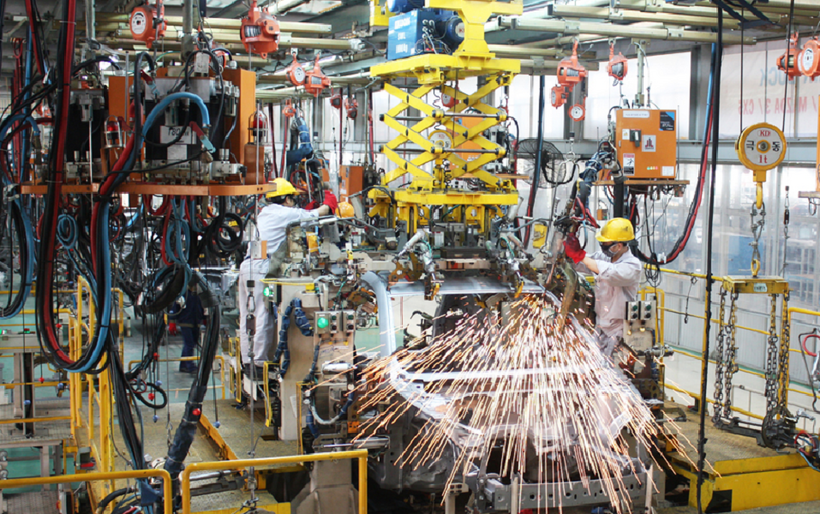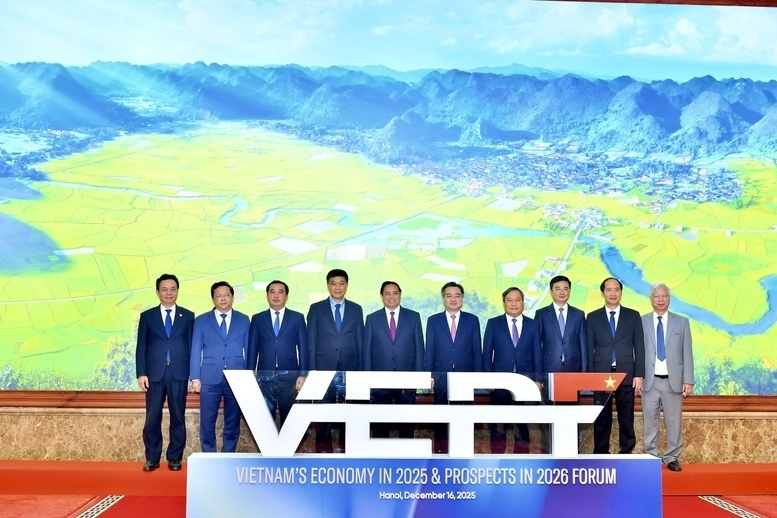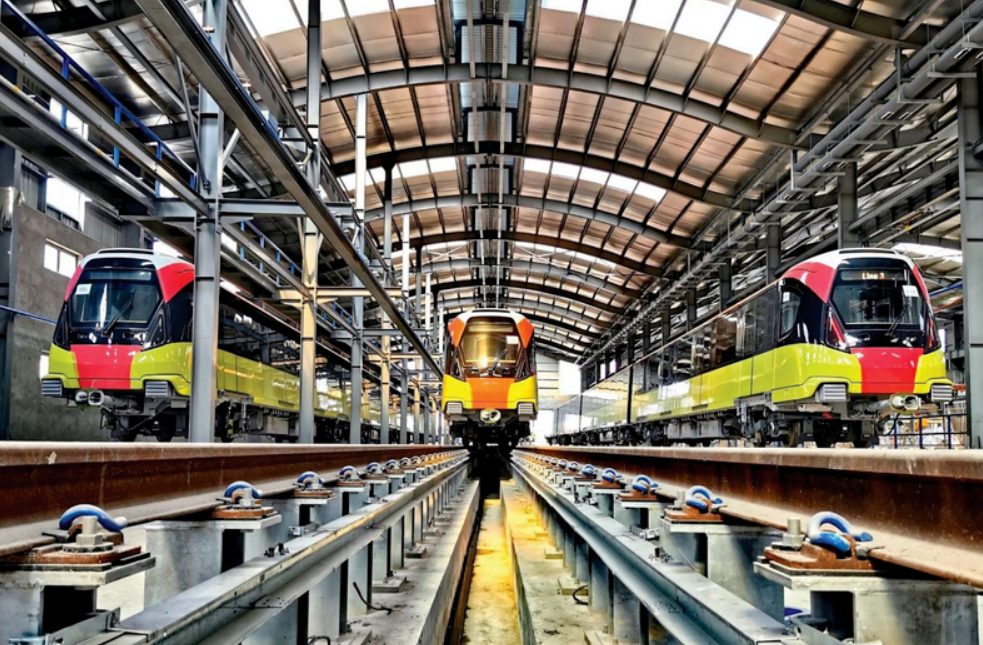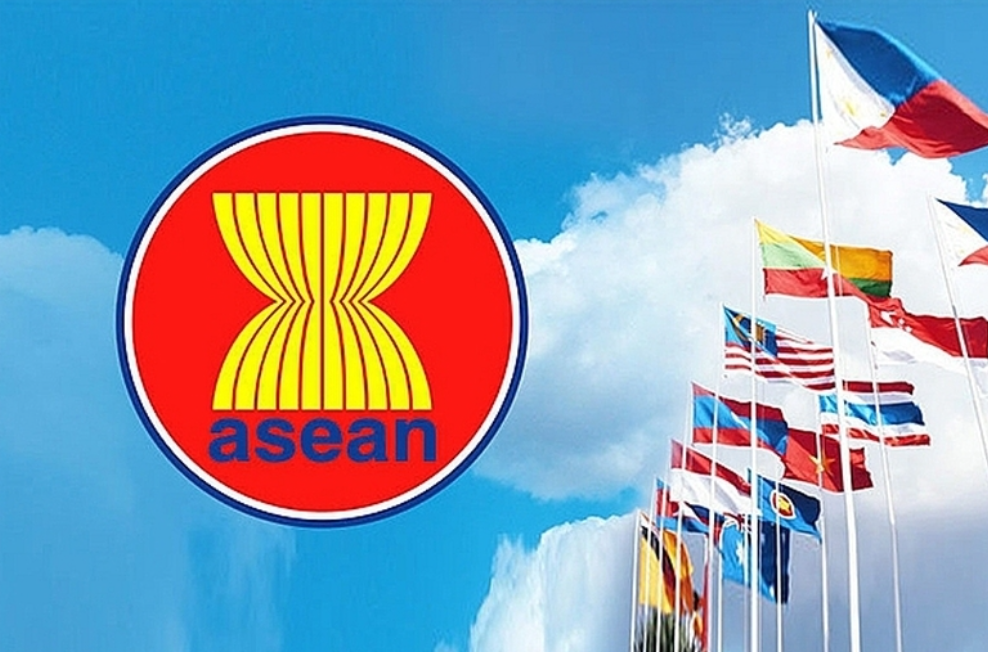
When sustainability is no longer optional for Vietnam’s textile firms
19:05 | 23/03/2025 11:18 | 17/12/2025Trade
Industrial structure shifts toward international standards
According to the latest report from the Ministry of Industry and Trade, accelerated public investment has boosted the output of construction materials, electromechanical equipment, logistics, and construction support services. However, manufacturing industries that rely on imported raw materials face potential challenges in securing stable supplies, maintaining production plans, and ensuring timely deliveries through the end of the year. Selling prices of several products have fallen while input costs continue to rise, creating caution within the industrial business community.
Notably, the Industrial Production Index (IIP) in August rose 2.2% from July and 8.9% year-on-year. Overall, in the first eight months, the IIP increased 8.5%, on par with the same period in 2024. This recovery was not confined to a few industries but spread across multiple key sectors.

Manufacturing continues to be the biggest driver of the industry. (Illustrative photo)
Manufacturing remained the largest growth driver, up 10% year-on-year. Breakthroughs were seen in several industries: automobile production surged nearly 60%, textiles rose 13.9%, footwear climbed 13.4%, rubber and plastics jumped 17.5%, and non-metallic minerals grew 15%. Meanwhile, oil and gas extraction continued to decline, with crude oil output down 1.3% and natural gas falling 9.4%.
Eighteen out of 34 provinces posted IIP growth rates higher than the national average during the eight-month period. Phu Tho grew 26.2%; Ninh Binh 22.8%; Thua Thien Hue 18.7%; Nghe An 16.4%; Quang Ninh 15.6%; Bac Ninh 15.4%; Tay Ninh 15.2%; Hai Phong 14.5%; Thanh Hoa 14.2%; Dong Nai 14.0%; An Giang 13.9%; Lai Chau 13.6%; Dong Thap 12.9%; Dak Lak 12.4%; Da Nang 12.0%; Quang Ngai 11.7%; and both Dien Bien and Hung Yen rose 11.4%.
Associate Professor Dr. Nguyen Thuong Lang from the Institute of International Trade and Economics, National Economics University, remarked: “From the perspective of industrial structure, we can see a clear divergence. Sectors that meet green standards, low-carbon requirements, and align with global economic restructuring—such as steel, construction materials, and electronics—are showing strong growth. Conversely, traditional sectors like mining and oil and gas are in decline, which is understandable.”
He emphasized that this is not just a short-term fluctuation but reflects a long-term shift: “Vietnam’s industrial structure will increasingly tilt toward manufacturing with higher technological content and stricter environmental standards. Industries unable to keep pace with international norms will inevitably slow down, but this is the natural filtering process of development.”
Turning challenges into drivers
One bright spot, according to Dr. Lang, is foreign direct investment (FDI). “FDI is currently the strongest driver of Vietnam’s industry. It brings technology and global production networks at the same time. FDI enterprises in Vietnam not only produce for export but also create supply chains, generate jobs, and open new market connections.”
“In fact, many major corporations have established production lines for electronics, phones, telecommunications equipment, and high-tech components in Vietnam. At certain points, Vietnam’s share of high-tech exports even surpassed China’s in some product categories,” he observed.
Besides FDI, digital transformation is seen as the second growth catalyst. “Digital transformation and policy transformation are becoming key drivers. Enterprises that embrace digital technology can expand rapidly, while those who lag behind will fall back or be left out,” he added.
In banking, services, and manufacturing, digital technology has helped reduce costs and improve management efficiency. Some agricultural and textile firms are already applying smart management systems to meet strict export standards, from traceability to carbon emission control.
“This is encouraging,” Dr. Lang noted. “Vietnamese enterprises, even small and medium-sized ones, are aware of the importance of digital transformation. In footwear and textiles—sectors with traditional strengths—this shift helps complement the FDI sector, creating a more balanced growth picture.”
Another highlight in his analysis is Vietnam’s ability to turn global trade challenges into opportunities. “When higher tariffs are imposed on steel, aluminum, or goods from certain countries, Vietnamese businesses find more room to enter those markets. What may seem like barriers for others can sometimes be drivers for Vietnam,” he explained.
He called this a positive outcome of integration: “We have 17 free trade agreements that open vast markets. As global trade restructures, Vietnamese goods can seize the gaps left behind by other countries. Their challenges can often become our opportunities.”
Still, he cautioned that to turn opportunities into tangible benefits, Vietnam must improve its domestic business environment: “Administrative costs, logistics, and compliance procedures remain high. Unless these hidden costs are reduced, cheap labor and land will no longer be enough to ensure competitiveness.”
Despite rising input costs, export fluctuations, and slowing domestic demand, Dr. Lang remains optimistic about Vietnam’s industrial outlook. He explained: “The demand for basic industrial goods such as construction materials, steel, and cement is still very strong thanks to public investment. Electronics and textiles continue to enjoy stable markets. I believe the fourth quarter will see higher growth than the previous three quarters, and full-year 2025 may exceed the average of the first three quarters.”

19:05 | 23/03/2025 11:18 | 17/12/2025Trade

19:05 | 23/03/2025 11:17 | 17/12/2025Trade

19:05 | 23/03/2025 09:50 | 17/12/2025Trade

19:05 | 23/03/2025 20:46 | 16/12/2025Industry

19:05 | 23/03/2025 20:41 | 16/12/2025News and Events